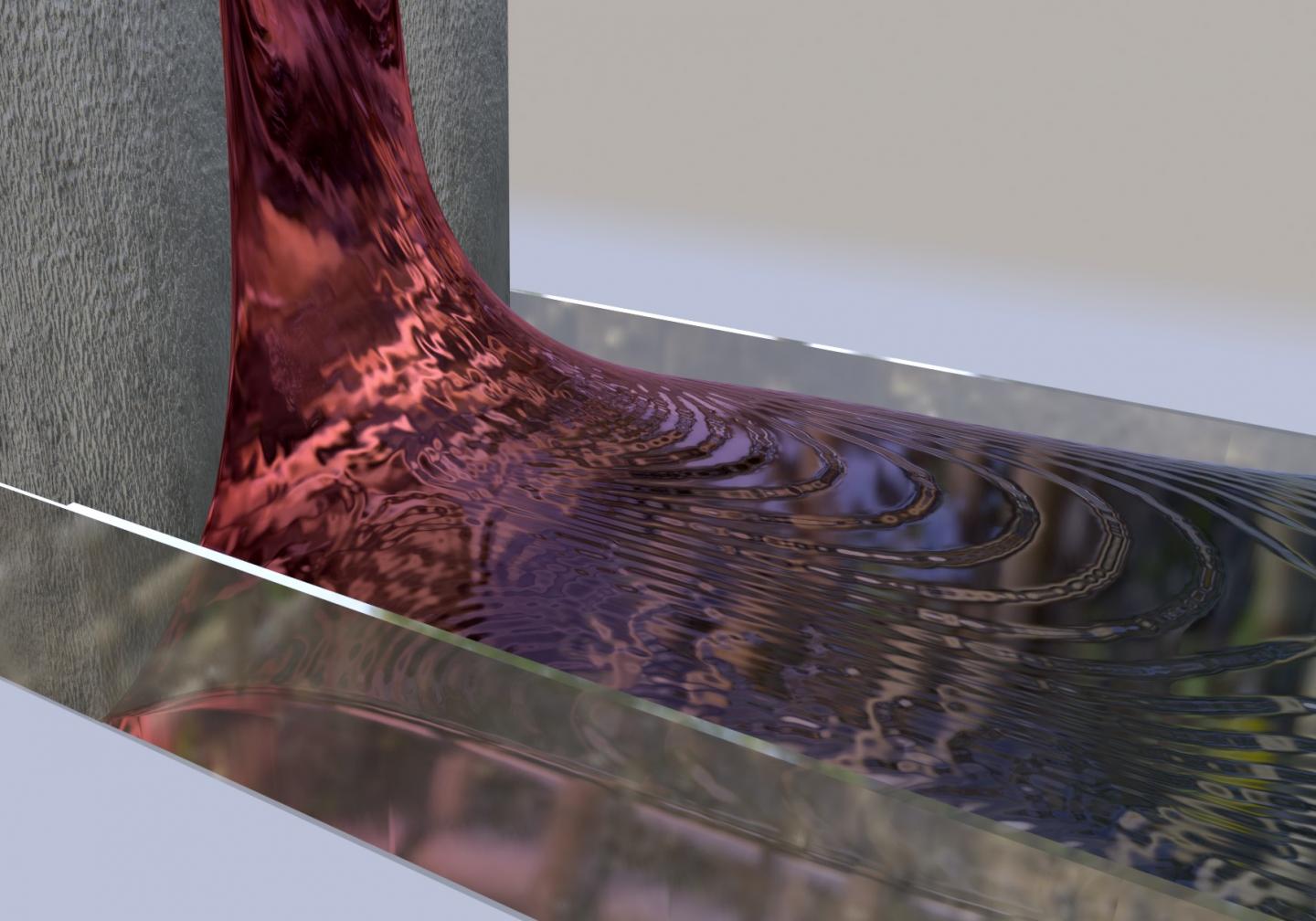BIG DATA
MARVEL researchers generalize Fourier's heat equation; explaining hydrodynamic heat propagation
The theory is in striking agreement with pioneering experimental results in graphite published last year
Fourier's well-known heat equation, introduced in 1822, describes how temperature changes in space and time when heat flows through a material. In general, this formulation works well to describe heat conduction in objects that are macroscopic (typically, a millimeter or larger), and at high temperatures. It fails, however, in describing so-called "hydrodynamic heat phenomena."
One such phenomenon is Poiseuille heat flow, where the heat flux becomes similar to the flow of a fluid in a pipe: it has a maximum in the center and minima at the boundaries, suggesting that heat propagates as a viscous-fluid flow. Another, called "second sound" takes place when heat propagation in a crystal is akin to that of sound in air: given portions of the crystal oscillates quickly between being hot and cold, instead of following the gentle temperature variation observed in the usual (diffusive) propagation.
Neither of these phenomena is described by Fourier's equation. Until now, researchers have only been able to analyze these phenomena using microscopic models, whose complexity and high computational cost have hindered both understanding and application to anything but the simplest geometries. In contrast, in developing the novel viscous heat equations, MARVEL researchers have condensed all the relevant physics underlying heat conduction into accurate and easily-solvable equations. This introduces a novel basic research tool for the design of electronic devices, especially those integrating diamond, graphene or other low-dimensional or layered materials where hydrodynamic phenomena are now understood to be prevalent.  {module INSIDE STORY}
{module INSIDE STORY}
The work is particularly timely. While these heat hydrodynamic phenomena have been observed since the 1960s, they were only seen at cryogenic temperatures (around -260 degrees C) and therefore thought to be irrelevant for everyday applications. These beliefs suddenly changed last March with the publication in Science of pioneering experiments that found second-sound (or wavelike) heat propagation in graphite employed in several engineering devices and promising material for next-generation electronics at the record temperature of -170 degrees C.
The novel formulation presented in the paper Generalization of Fourier's law into viscous heat equations yields results for graphite that are in striking agreement with these experiments and also predicts that this hydrodynamic heat propagation can be observed in diamond even at room temperature. This prediction is awaiting experimental confirmation, which would establish a new record for the maximum temperature at which hydrodynamic heat transfer is observed.
The work is very relevant for applications since such hydrodynamic heat propagation can emerge in materials for next-generation electronic devices, where overheating is the main limiting factor for miniaturization and efficiency. Knowing how to handle the heat generated in these devices is critical to understanding how to maximize their efficiency, or even predict if they will work or just melt because of overheating. The paper provides new and original insights into transport theories and also paves the way towards the understanding of shape and size effects, e.g., new-generation electronic devices and so-called "phononic" devices that control cooling and heating. Finally, this novel formulation can be adapted to describe viscous phenomena involving electricity, discovered by Philip Moll in 2017, now a professor at the Institute of Materials at EPFL.
For the mathematically inclined
In this work, MARVEL researchers have coarse-grained the microscopic integrodifferential phonon Boltzmann transport equation into mesoscopic (simpler) differential equations, which they have called "viscous heat equations". These viscous heat equations capture the regime where the atomic vibrations in a solid ("phonons") assume a collective ("drift") velocity akin to that of a fluid. They have shown how thermal conductivity and viscosity can be determined exactly and in closed-form as a sum over the eigenvectors of the scattering matrix (the "relaxons", a concept introduced in 2016 by Cepellotti, for which he was awarded the IBM Research Prize and the Metropolis Prize of the American Physical Society). Relaxons have well-defined parities, with even relaxons determining the thermal viscosity and odd relaxons determining the thermal conductivity, and thermal conductivity and viscosity govern the evolution of the temperature and drift-velocity fields in these two coupled viscous heat equations.
In the paper, the scientists also introduced a Fourier deviation number (FDN), a dimensionless parameter that quantifies the deviation from Fourier's law due to hydrodynamic effects. The FDN is a scalar descriptor that captures the deviations from Fourier's law due to viscous effects, playing a role analogous to the Reynolds number for fluids, which is a parameter that engineers use to distinguish the different possible behaviors of the solutions to the Navier-Stokes equations.

